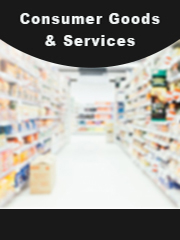Report overview
Dairy products are high energy-yielding products made from raw milk. Since milk can be easily contaminated because of lactose fermentation, dairy products need to be packed in durable materials, so they reach the customer in desirable condition. Increase in demand for milk and dairy products has brought a transformation in the packaging industry.
Vendors in the global dairy packaging market are inventing new technologies for packaging materials that can prevent contamination of dairy products. Some of the containers used for packaging dairy products are cups, cans, sachets, bottles, and tubs, which are made as per the convenience of the customer and the requirement of products. The demand for packaging is further surging because of increasing popularity of smaller multipacks and rising consumer preference toward yogurt. Packaging also plays a major role in attracting the customers to purchase the product.
This report aims to provide a comprehensive presentation of the global market for Dairy Packaging, with both quantitative and qualitative analysis, to help readers develop business/growth strategies, assess the market competitive situation, analyze their position in the current marketplace, and make informed business decisions regarding Dairy Packaging. This report contains market size and forecasts of Dairy Packaging in global, including the following market information:
Global Dairy Packaging Market Revenue, 2018-2023, 2024-2029, ($ millions)
Global Dairy Packaging Market Sales, 2018-2023, 2024-2029, (M Units)
Global top five Dairy Packaging companies in 2022 (%)
The global Dairy Packaging market was valued at US$ 30780 million in 2022 and is projected to reach US$ 37030 million by 2029, at a CAGR of 2.7% during the forecast period. The influence of COVID-19 and the Russia-Ukraine War were considered while estimating market sizes.
The market is highly competitive. The main market players are Tetra Laval, SIG Combibloc, Elopak, Amcor and Weyerhaeuser, etc.
We surveyed the Dairy Packaging manufacturers, suppliers, distributors and industry experts on this industry, involving the sales, revenue, demand, price change, product type, recent development and plan, industry trends, drivers, challenges, obstacles, and potential risks.
Total Market by Segment:
Global Dairy Packaging Market, by Type, 2018-2023, 2024-2029 ($ Millions) & (M Units)
Global Dairy Packaging Market Segment Percentages, by Type, 2022 (%)
Bottles
Pouches
Cups
Cans
Carton & Boxes
Others
Global Dairy Packaging Market, by Application, 2018-2023, 2024-2029 ($ Millions) & (M Units)
Global Dairy Packaging Market Segment Percentages, by Application, 2022 (%)
Cheese
Cream
Ice Cream
Yogurt and Cultured Product
Milk
Butter
Others
Global Dairy Packaging Market, By Region and Country, 2018-2023, 2024-2029 ($ Millions) & (M Units)
Global Dairy Packaging Market Segment Percentages, By Region and Country, 2022 (%)
North America
US
Canada
Mexico
Europe
Germany
France
U.K.
Italy
Russia
Nordic Countries
Benelux
Rest of Europe
Asia
China
Japan
South Korea
Southeast Asia
India
Rest of Asia
South America
Brazil
Argentina
Rest of South America
Middle East & Africa
Turkey
Israel
Saudi Arabia
UAE
Rest of Middle East & Africa
Competitor Analysis
The report also provides analysis of leading market participants including:
Key companies Dairy Packaging revenues in global market, 2018-2023 (Estimated), ($ millions)
Key companies Dairy Packaging revenues share in global market, 2022 (%)
Key companies Dairy Packaging sales in global market, 2018-2023 (Estimated), (M Units)
Key companies Dairy Packaging sales share in global market, 2022 (%)
Further, the report presents profiles of competitors in the market, key players include:
Teta Laval
SIG Combibloc
Elopak
Amcor
Greatview
Qingdao Likang Packing
Stora Enso
Nippon Paper Group
Bihai
Weyerhaeuser
Xinju Feng Pack
Jielong Yongfa
International Paper
Skylong
Ecolean
Coesia IPI
Serac
Outline of Major Chapters:
Chapter 1: Introduces the definition of Dairy Packaging, market overview.
Chapter 2: Global Dairy Packaging market size in revenue and volume.
Chapter 3: Detailed analysis of Dairy Packaging manufacturers competitive landscape, price, sales and revenue market share, latest development plan, merger, and acquisition information, etc.
Chapter 4: Provides the analysis of various market segments by type, covering the market size and development potential of each market segment, to help readers find the blue ocean market in different market segments.
Chapter 5: Provides the analysis of various market segments by application, covering the market size and development potential of each market segment, to help readers find the blue ocean market in different downstream markets.
Chapter 6: Sales of Dairy Packaging in regional level and country level. It provides a quantitative analysis of the market size and development potential of each region and its main countries and introduces the market development, future development prospects, market space of each country in the world.
Chapter 7: Provides profiles of key players, introducing the basic situation of the main companies in the market in detail, including product sales, revenue, price, gross margin, product introduction, recent development, etc.
Chapter 8: Global Dairy Packaging capacity by region & country.
Chapter 9: Introduces the market dynamics, latest developments of the market, the driving factors and restrictive factors of the market, the challenges and risks faced by manufacturers in the industry, and the analysis of relevant policies in the industry.
Chapter 10: Analysis of industrial chain, including the upstream and downstream of the industry.
Chapter 11: The main points and conclusions of the report.
